Special Report
Every Standard Issue US Army Sidearm Since The American Revolution
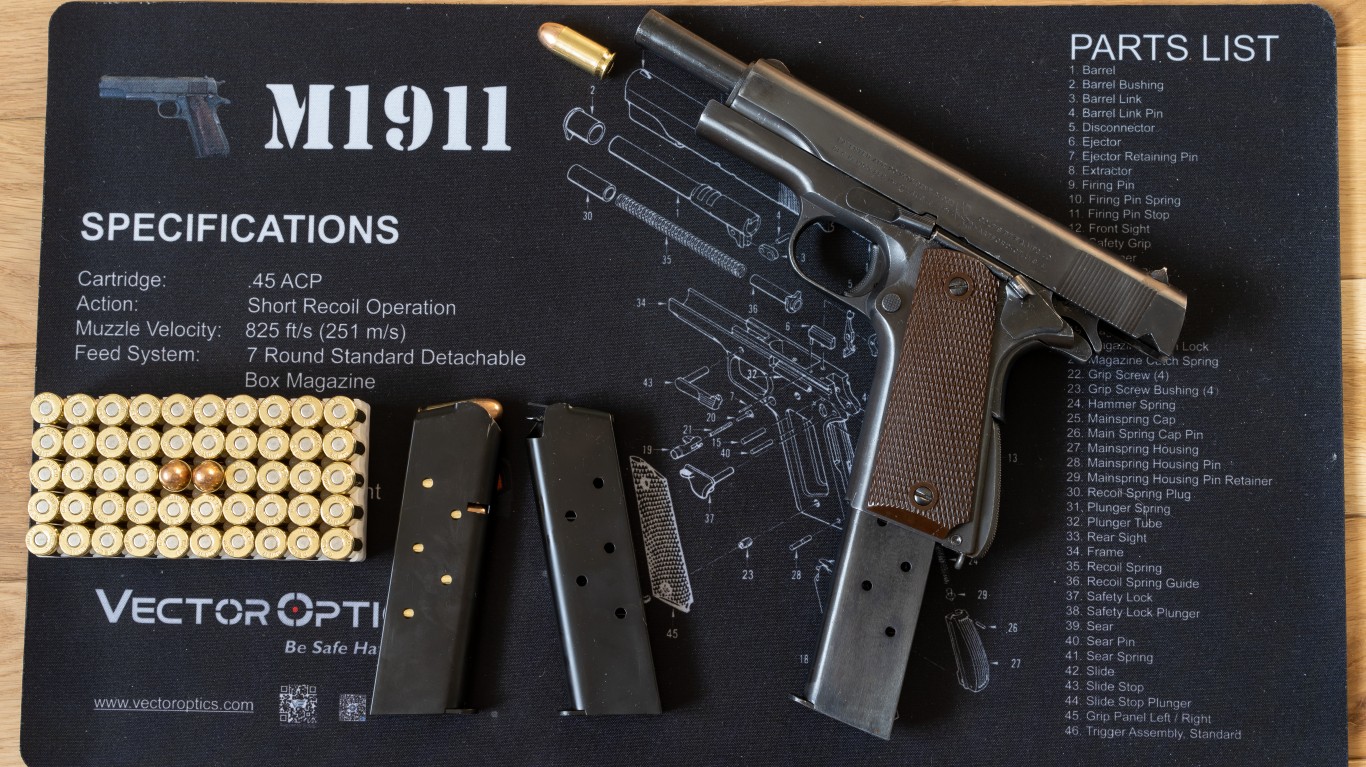
Published:

The U.S. Army announced in January 2017 plans to replace the standard issue sidearm, the Beretta M9, with a new model – the Sig Sauer M17 and M18, based on the company’s P320 pistol. The switch, part of the military’s continuous modernization efforts, marked the end of over 30 years of service for the Beretta and was only the latest in a long series of upgrades to the standard issue U.S. Army sidearm.
Sidearms, or service pistols, are typically used as a backup or short-range weapon in combat situations. Though not typically carried by enlisted service members, sidearms are widely used by special forces operators and are often the primary weapon of officers. (This is what it takes to become part of America’s 16 most elite special forces.)
Since the Revolutionary War, the American military has carried a wide variety of sidearms. These guns were chosen for their reliability, durability, and lethality. Over the last 250 years, these guns have changed considerably, from flintlocks in the earliest days of the country to the modern semi-automatic.
Using data from the Army report Survey of U.S. Army: Uniforms, Weapons, and Accoutrements, 24/7 Wall St. identified the sidearms used by the U.S. Army since the 18th century. For earlier weapons, we listed the era in which they were primarily used, but for more modern handguns, the exact years of use are noted.
A historical look at U.S. Army sidearms is a direct reflection of the evolution of firearm technology. Flintlock pistols of the late 18th and early 19th centuries were eventually replaced by the caps lock, which created a spark using an explosive chemical compound rather than a piece of flint striking steel. Cap lock pistols were easier to load, more reliable, and more weather resistant than the flintlock design.
From the mid 19th century through the early 20th century, revolvers were the standard issue military pistol. Repeaters that could fire multiple rounds before being reloaded, revolvers marked a significant upgrade from cap lock guns.
But since World War II, the U.S. Army has relied almost exclusively on semi-automatic pistols, which offered greater magazine capacity and faster reload times. They were also easier to functionally maintain in muddy conditions than revolvers. In service for multiple decades before being replaced by the Beretta M9, the Colt 1911 semi-automatic pistol was used by the U.S. military in nearly every conflict the U.S. was involved in during the 20th century – from World War I through Vietnam. (Here is a look at every firearm currently used by the U.S. military.)
Click here to see every standard issue US Army sidearm since the American Revolution.
19. British Light Dragoon Saddle Pistol
> Primary era of use: Late 18th century
> Notable conflict(s) of the period: American Revolution
> Firearm type: Flintlock
> Chambered in: .70 caliber
[in-text-ad]
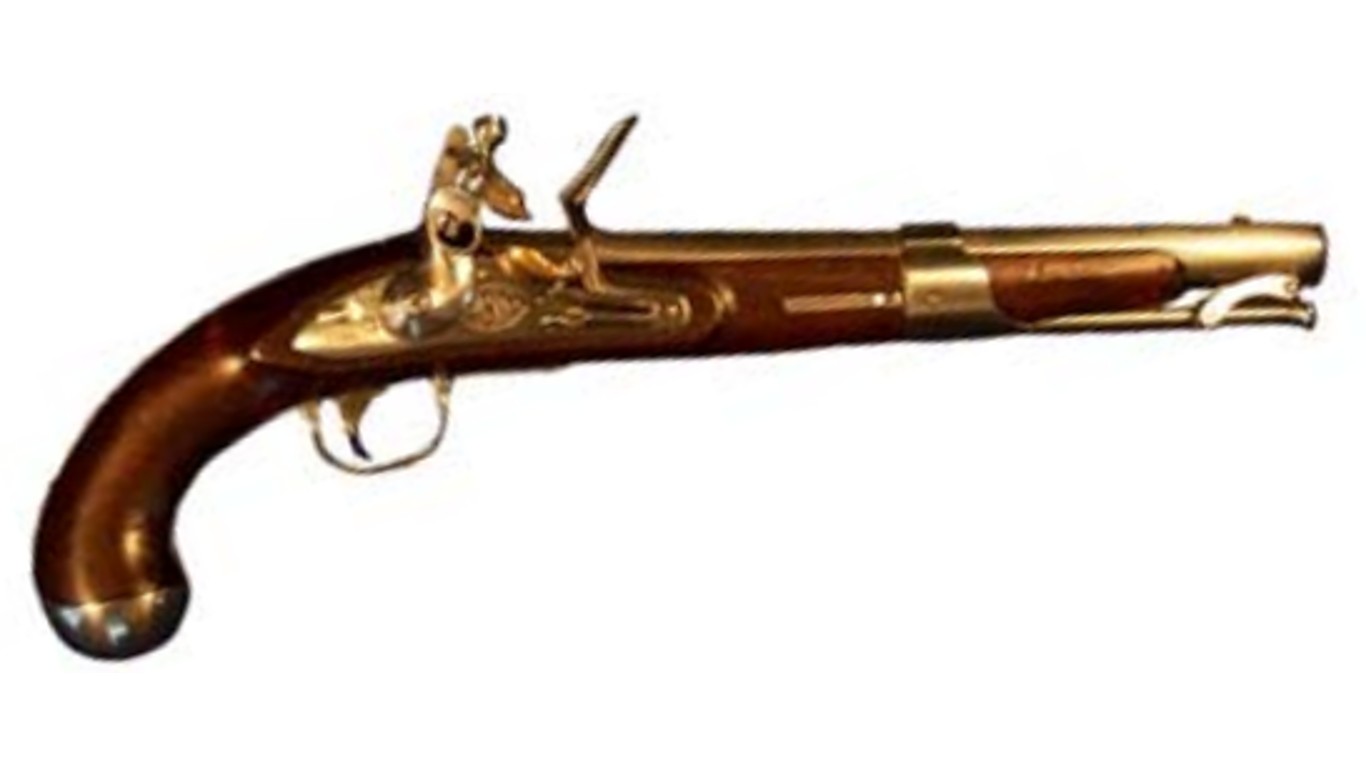
18. North Model 1819 Pistol
> Primary era of use: 1786-1833
> Notable conflict(s) of the period: War of 1812
> Firearm type: Flintlock
> Chambered in: .54 caliber

17. Johnson Model 1836 Pistol
> Primary era of use: 1786-1833
> Notable conflict(s) of the period: War of 1812
> Firearm type: Flintlock
> Chambered in: .54 caliber
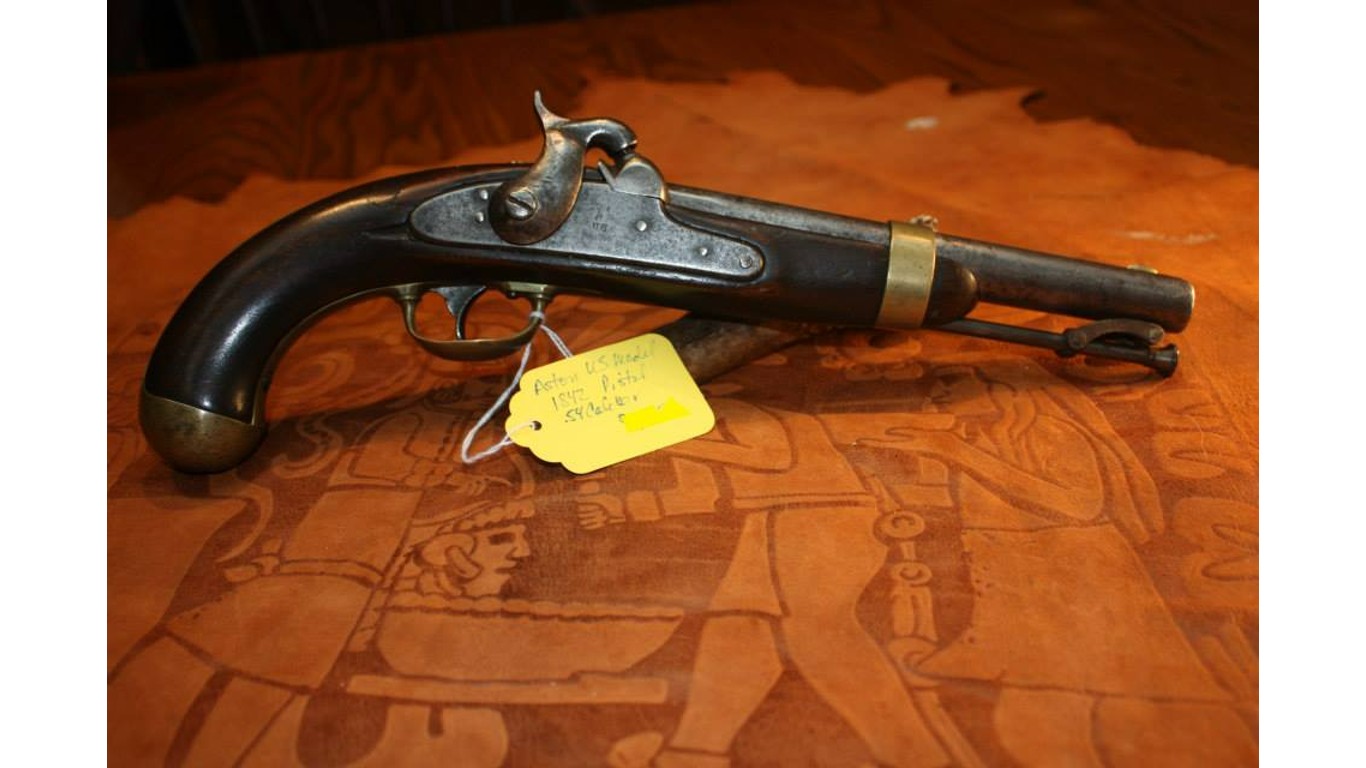
16. Model 1842 Percussion Pistol
> Primary era of use: 1786-1833
> Notable conflict(s) of the period: War of 1812
> Firearm type: Cap lock
> Chambered in: .54 caliber
[in-text-ad-2]

15. Colt M1851 Navy Model
> Primary era of use: 1851-1872
> Notable conflict(s) of the period: Civil War
> Firearm type: Revolver
> Chambered in: .36 caliber
14. Colt M1860 New Army Model
> Primary era of use: 1851-1872
> Notable conflict(s) of the period: Civil War
> Firearm type: Revolver
> Chambered in: .44 caliber
[in-text-ad]
13. Remington Army Model
> Primary era of use: 1851-1872
> Notable conflict(s) of the period: Civil War
> Firearm type: Revolver
> Chambered in: .44 caliber
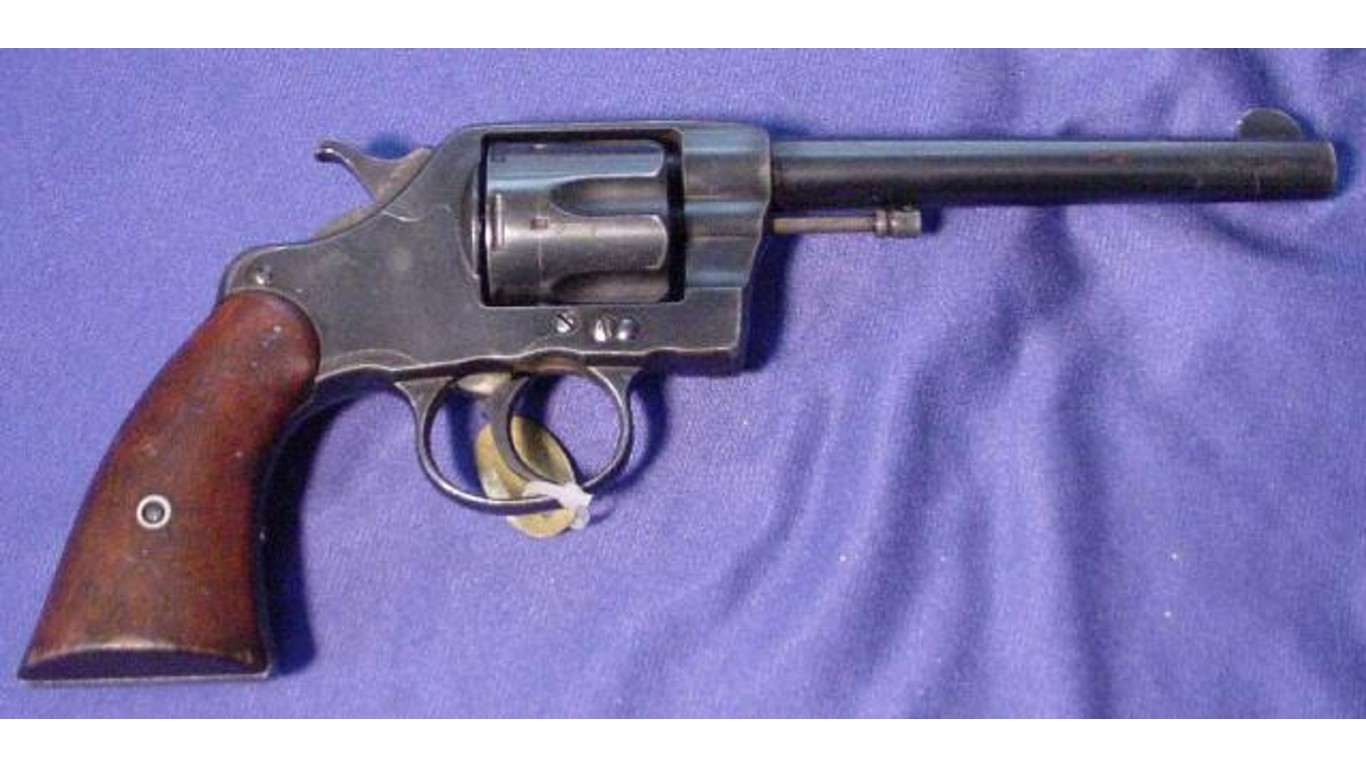
12. Colt New Army Model
> Primary era of use: 1872-1902
> Notable conflict(s) of the period: Spanish-American War
> Firearm type: Revolver
> Chambered in: .44 caliber
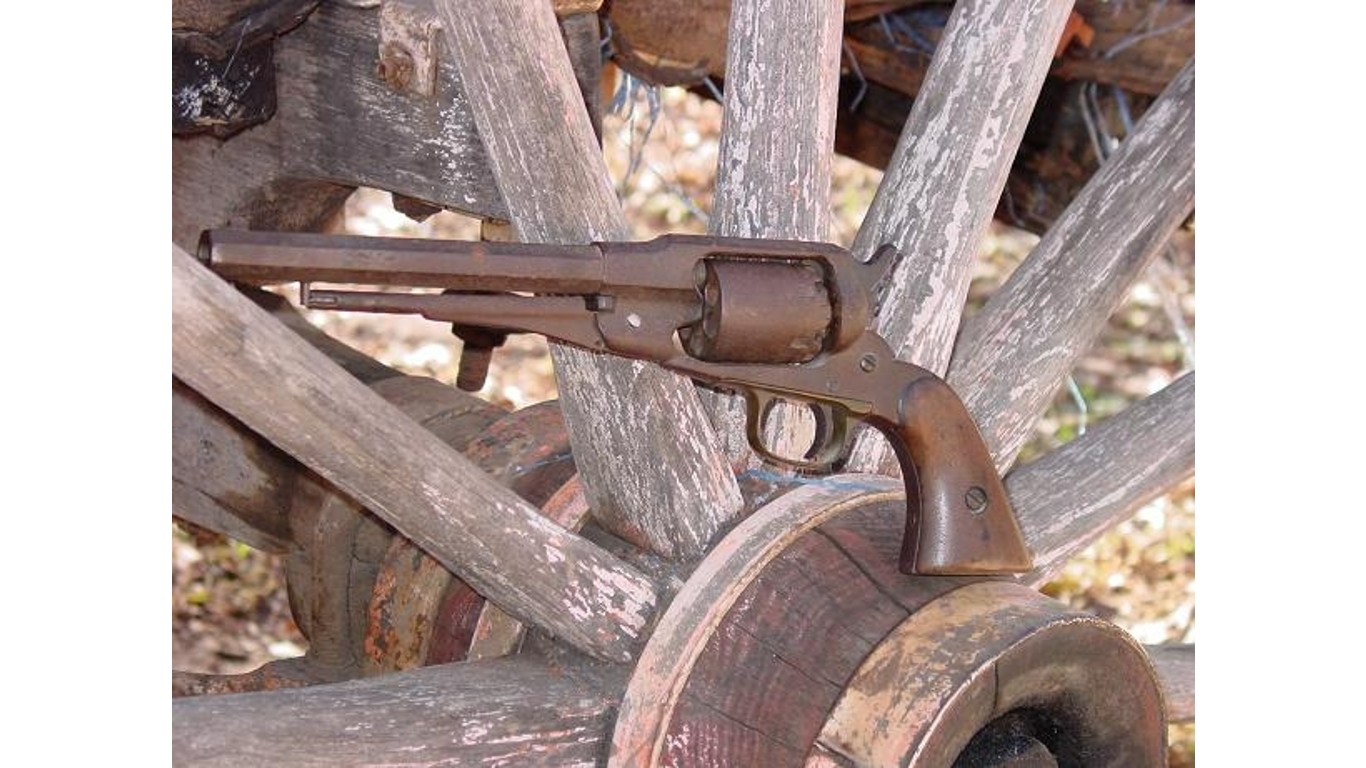
11. Remington Army
> Primary era of use: 1872-1902
> Notable conflict(s) of the period: Spanish-American War
> Firearm type: Revolver
> Chambered in: .44 caliber
[in-text-ad-2]

10. Colt Single-Action Army
> Primary era of use: 1872-1902
> Notable conflict(s) of the period: Spanish-American War
> Firearm type: Revolver
> Chambered in: .45 caliber
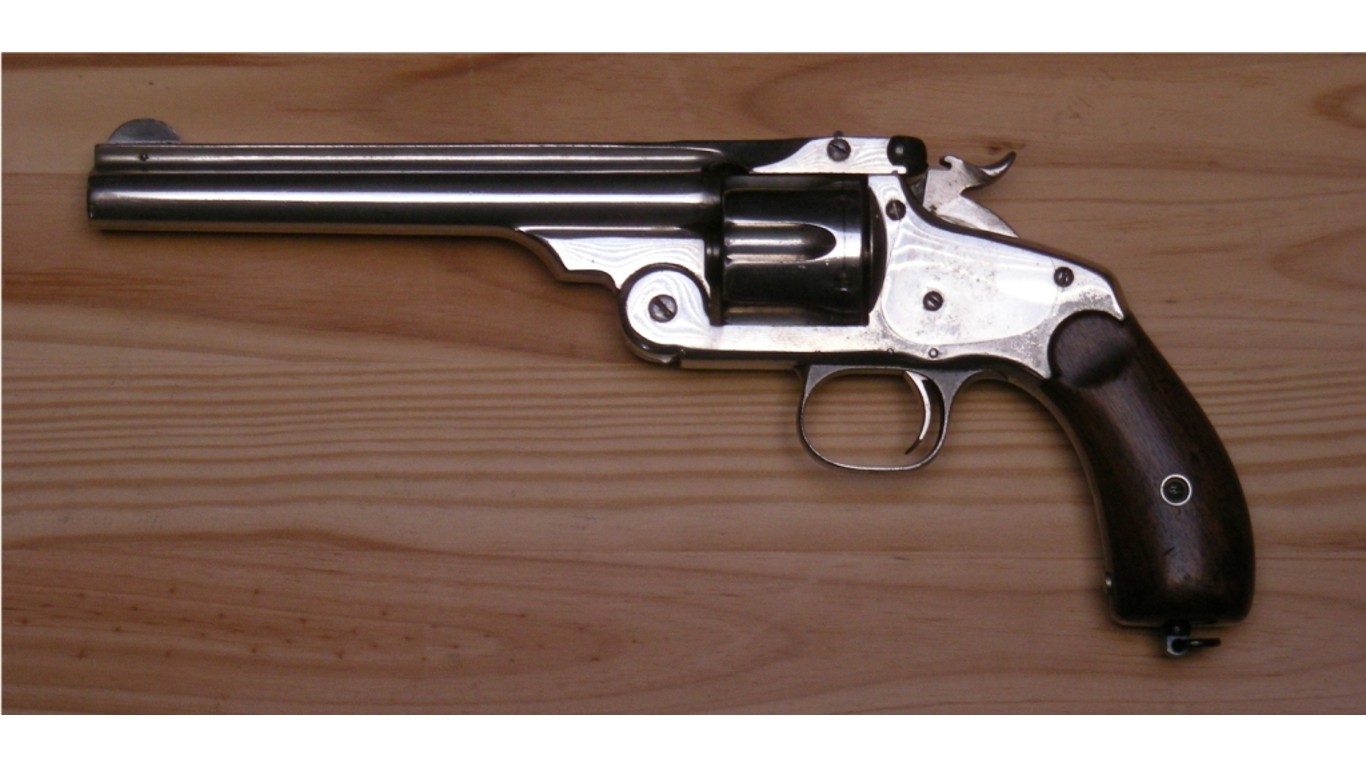
9. Smith & Wesson No. 3
> Primary era of use: 1872-1902
> Notable conflict(s) of the period: Spanish-American War
> Firearm type: Revolver
> Chambered in: .45 caliber
[in-text-ad]

8. Double-Action Army
> Primary era of use: 1872-1902
> Notable conflict(s) of the period: Spanish-American War
> Firearm type: Revolver
> Chambered in: .38 caliber

7. Colt Model 1901
> Primary era of use: 1902-1926
> Notable conflict(s) of the period: World War I
> Firearm type: Revolver
> Chambered in: .38 caliber
6. Colt Model 1909
> Primary era of use: 1902-1926
> Notable conflict(s) of the period: World War I
> Firearm type: Revolver
> Chambered in: .45 caliber
[in-text-ad-2]
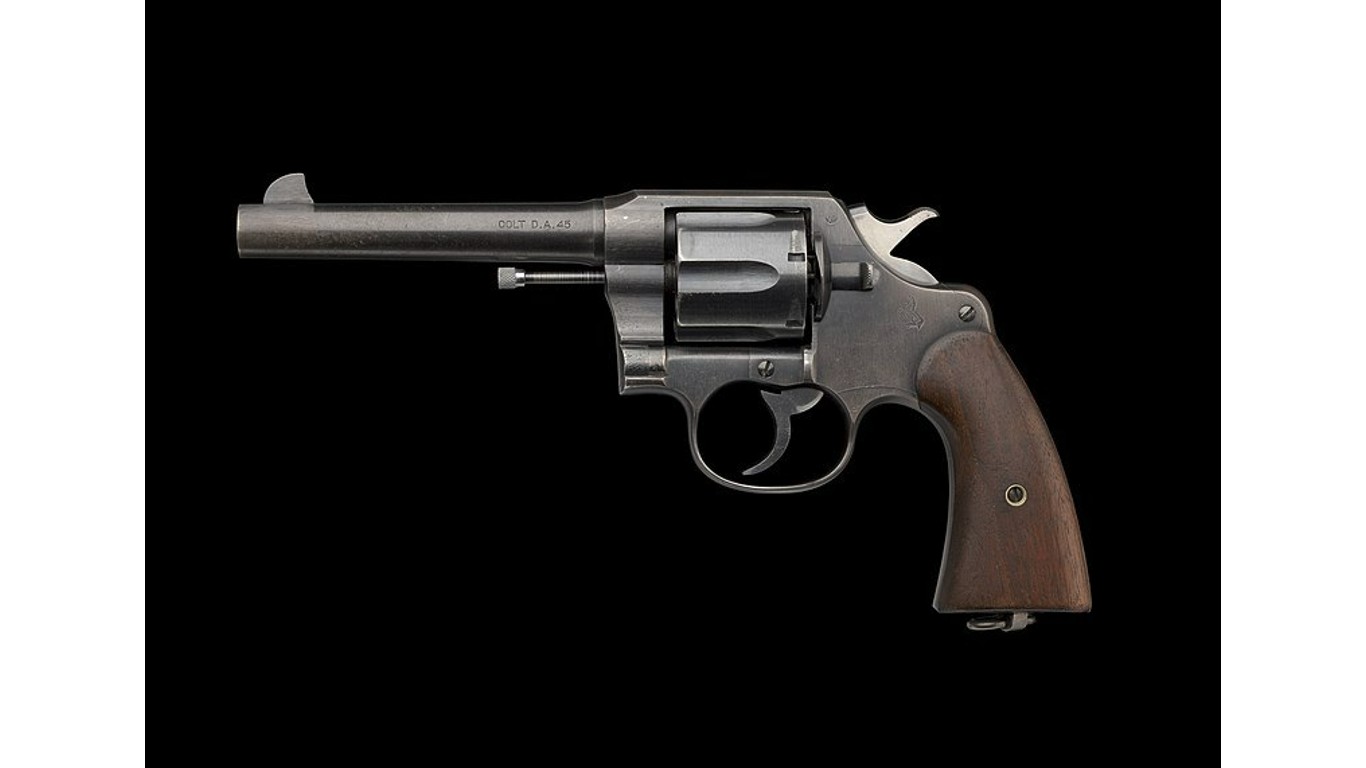
5. Colt/Smith & Wesson Model 1917
> Primary era of use: 1902-1945
> Notable conflict(s) of the period: World War I
> Firearm type: Revolver
> Chambered in: .45 caliber
4. Smith & Wesson Victory Model
> Primary era of use: 1926-1956
> Notable conflict(s) of the period: World War II
> Firearm type: Revolver
> Chambered in: .38 caliber
[in-text-ad]
3. Colt Model 1911
> Primary era of use: 1912-1985
> Notable conflict(s) of the period: World War I, World War II, Vietnam War
> Firearm type: Semi-automatic
> Chambered in: .45 caliber

2. Beretta M9/92 FS
> Primary era of use: 1985-2017
> Notable conflict(s) of the period: Wars in Iraq and Afghanistan
> Firearm type: Semi-automatic
> Chambered in: 9mm
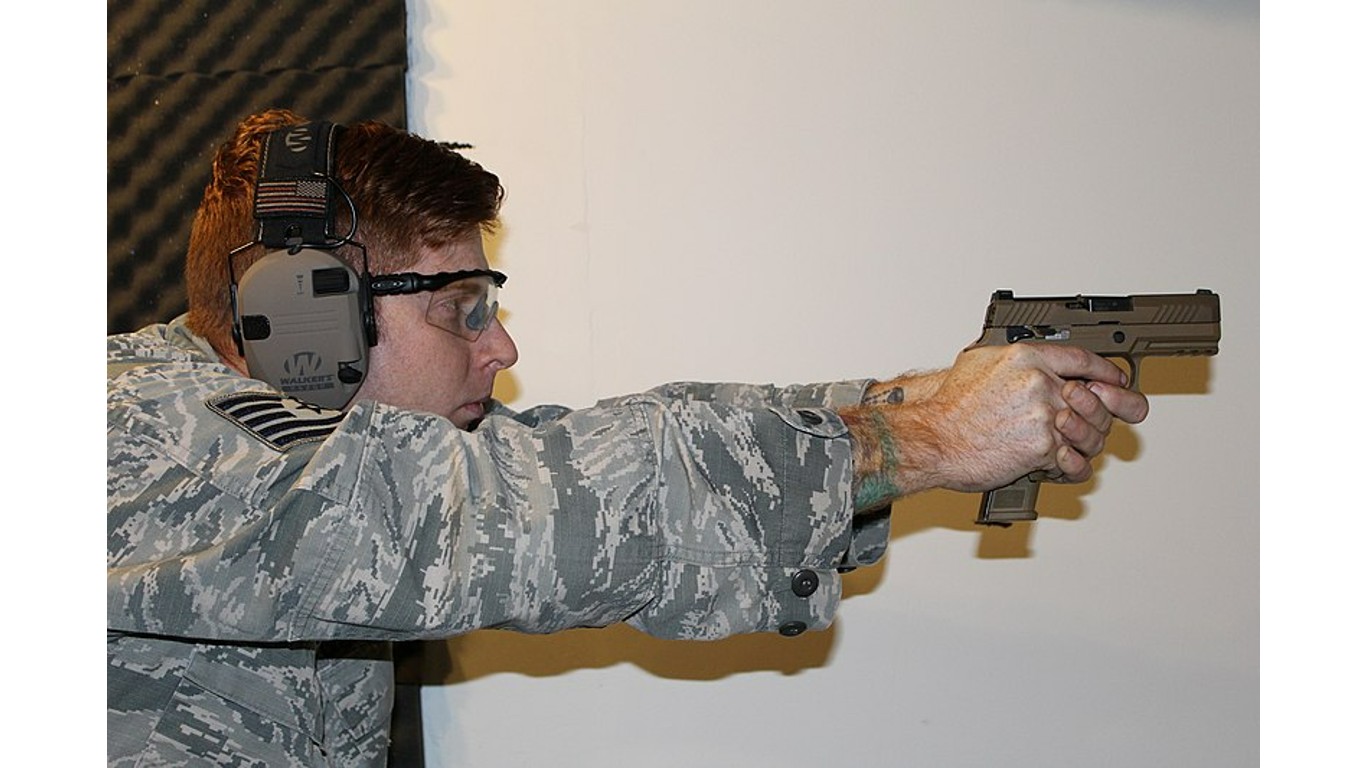
1. Sig Sauer M17 & M18
> Primary era of use: 2017-present
> Notable conflict(s) of the period: War in Afghanistan
> Firearm type: Semi-automatic
> Chambered in: 9mm
The last few years made people forget how much banks and CD’s can pay. Meanwhile, interest rates have spiked and many can afford to pay you much more, but most are keeping yields low and hoping you won’t notice.
But there is good news. To win qualified customers, some accounts are paying almost 10x the national average! That’s an incredible way to keep your money safe and earn more at the same time. Our top pick for high yield savings accounts includes other benefits as well. You can earn up to 3.80% with a Checking & Savings Account today Sign up and get up to $300 with direct deposit. No account fees. FDIC Insured.
Click here to see how much more you could be earning on your savings today. It takes just a few minutes to open an account to make your money work for you.
Thank you for reading! Have some feedback for us?
Contact the 24/7 Wall St. editorial team.